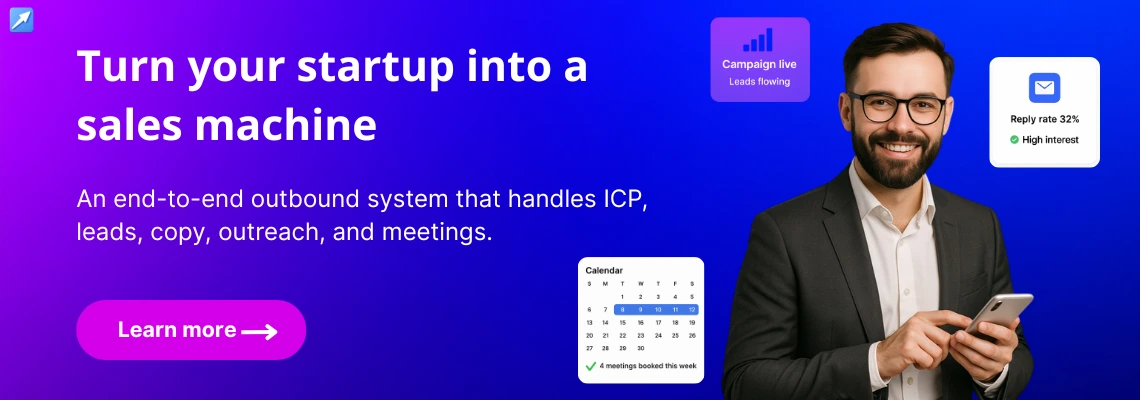Top 10 Startup Sales Questions in 2025 (With Visual Playbooks)

📅 Published: May 12, 2025 | ⏱️ 12–14 min read
Introduction
Is your startup struggling with scaling sales in 2025? You are not alone.
Many founders face the challenge of finding the right balance between cost-effective sales strategies and high-growth scaling. Whether you are handling sales on your own or trying to build a team, it’s easy to feel overwhelmed with the many decisions you need to make.
In this post, we’ll answer the top 10 questions every startup faces when tackling sales. From finding your target customers to deciding when to hire a sales team, we’ll guide you through each stage, offering practical advice and tools to help you grow your sales without breaking the bank.
By the end of this blog, you’ll have a clear understanding of how to optimize your sales approach and set your startup up for success in 2025 and beyond.
Q1. How can a startup get its first customers?
Getting your first customers is a crucial milestone for any startup, and the best place to start is by tapping into personal and local networks. Begin by telling friends, family, and colleagues about your product, and ask them to make introductions to potential customers.
Early-stage customers are often more willing to support your idea if they have a personal connection to you.
Leverage online communities:
Look for online communities or forums where your target audience is already active, such as niche Facebook groups, Reddit threads, or industry-specific forums.
Engage with the community by offering valuable insights or solutions to problems they’ve raised. This builds trust and creates an opportunity to share your product as a solution.
Example: Buffer’s success:
A great example of this is Buffer, which grew early by reaching out to bloggers with a free trial offer. Buffer identified influencers in their space who would find the product useful and got their initial feedback through a personal outreach.
Actionable Tip:
Offer a limited free trial or special discount to your network, and after they’ve tried it, ask for feedback and referrals. Startups often succeed by solving a niche pain point, so continuously improve your product based on early user feedback. This iterative process can help you gain a loyal customer base from the beginning.
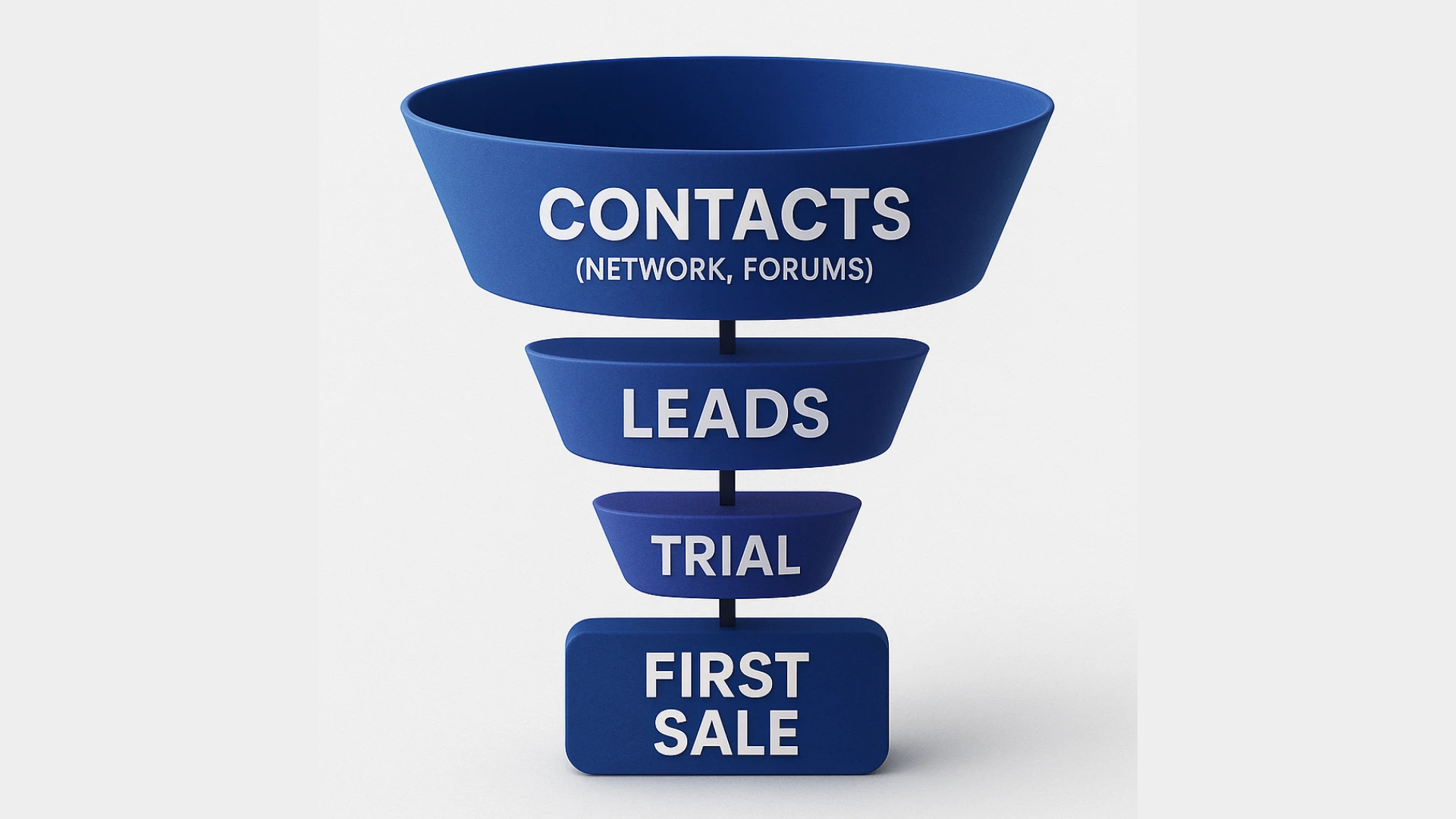
Q2. How should a startup find leads on a tight budget?
When you are on a tight budget, it’s crucial to focus on free or low-cost lead generation channels. Content marketing and SEO are powerful tools that can help attract inbound leads without breaking the bank.
Start by publishing helpful blog posts or LinkedIn articles on topics your target audience is searching for. By offering value upfront, you can naturally draw potential customers to your site.
Engage in niche communities:
Another cost-effective strategy is to join niche groups on LinkedIn or Facebook where your customers are active. Contribute meaningful advice or insights (without hard selling) to establish yourself as a trusted authority. These groups provide a great platform to connect with leads organically.
Try cold outreach:
Cold outreach can still be effective with a small budget. Send short, personalized emails or LinkedIn messages to a well-targeted list of prospects. Be sure to focus on providing value rather than a hard sell, and make your outreach feel personal and relevant to their specific needs.
Actionable Tip:
Use free tools like Google Alerts or AnswerThePublic to find out what questions your target audience is asking online. Then, create content that answers those questions on your blog or social media channels. Over time, consistency with this approach will pay off.. even a small, quality list of leads can significantly grow sales.
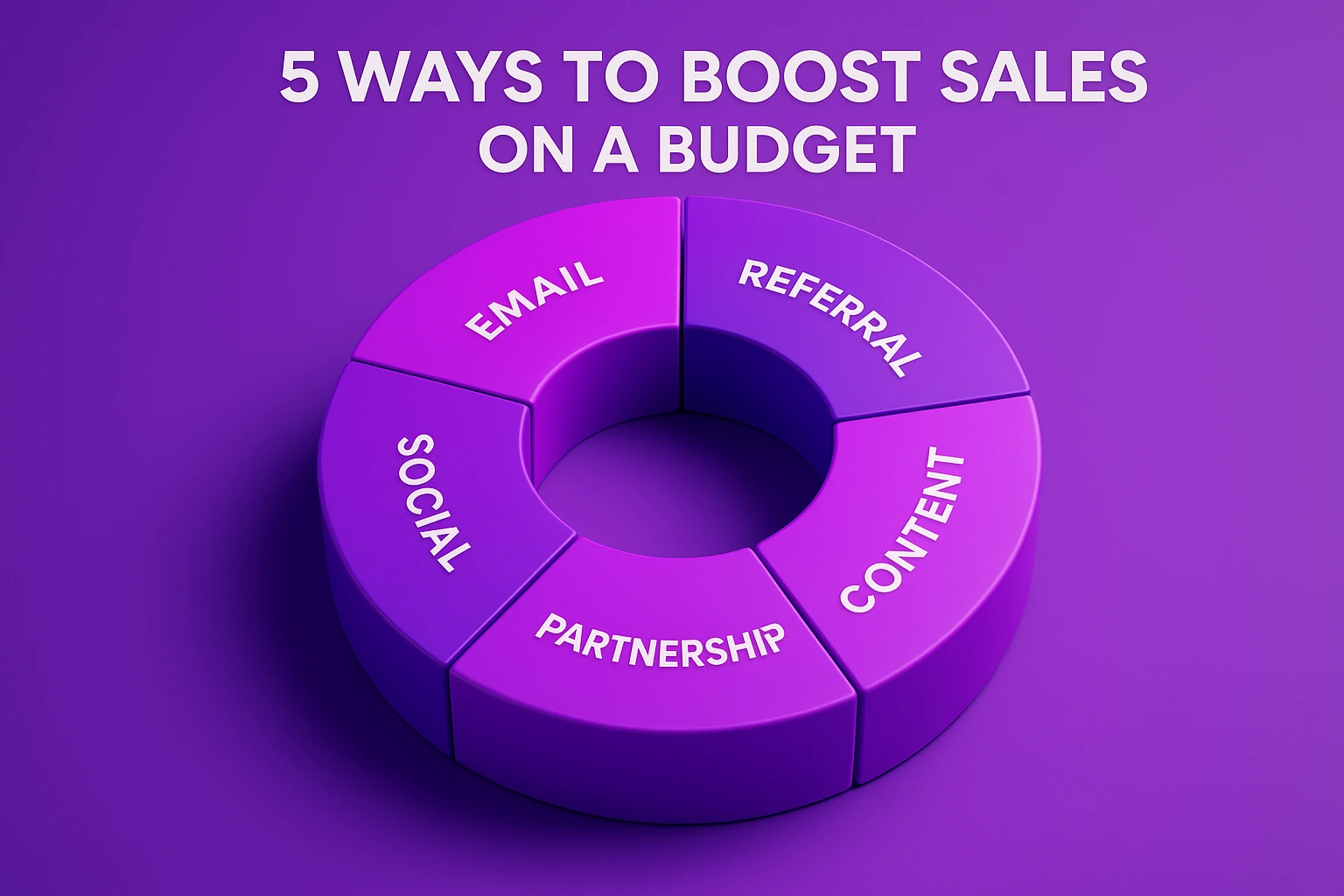
Q3. Should a startup hire sales reps or have founders sell at first?
In the early stages, founders should take the lead on sales. As the ones who know the product inside and out, founders can gather invaluable feedback directly from customer conversations.
This feedback loop not only helps refine your product-market fit but also enables you to fine-tune your pitch based on real-world insights.
Build a strong foundation first:
Until you have a repeatable sales process and growing demand, it’s typically better for founders to handle sales. This hands-on approach ensures that you fully understand the sales cycle, customer pain points, and objections.
Hiring too early can be risky, especially if there isn’t a stable process in place. It’s crucial to establish a working sales model before scaling with additional hires.
Gradually bring in sales help:
Once you have a predictable and scalable sales process in place, that’s the right time to start thinking about hiring your first sales rep.
At this stage, having a clear, repeatable process makes onboarding and training new hires easier, and they can hit the ground running with a proven framework.
Actionable Tip:
Set a trial period (e.g., 3-6 months) where the founder handles all sales, documenting every step of the process. Use this trial period to create a sales playbook that outlines the key stages, objections, and tactics that have worked best. Once you’ve refined this process, hire your first salesperson only when you can train them on the clear, documented sales steps that have already proven successful.
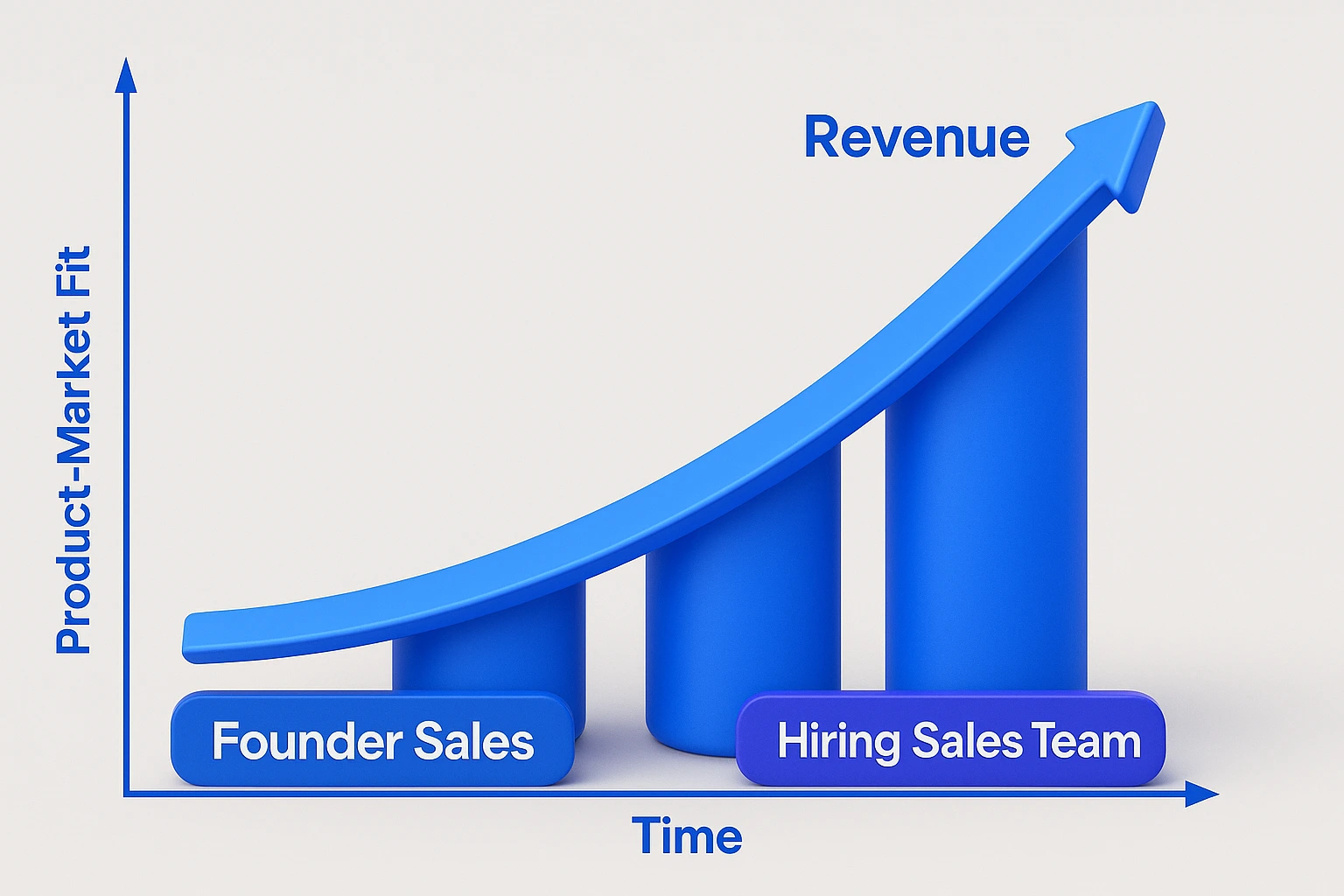
Q4. What is the best way to use LinkedIn for startup sales?
LinkedIn is one of the most powerful tools for B2B lead generation. The first step is to optimize your LinkedIn profile. Clearly state who you help, how you help them, and what specific problems your product or service solves. Your profile should reflect your expertise and build trust with potential leads.
Build and nurture your network:
Start by connecting with prospects, industry professionals, and anyone who may be relevant to your business. Focus on quality over quantity when it comes to connections.
Once connected, engage with their posts and share helpful content related to your niche. This will help position you as a credible and valuable resource.
Personalized outreach:
When reaching out to prospects, always send a personalized message. Referencing something specific about their business or a mutual connection can help you build rapport.
Avoid generic “pitch” messages that don’t provide value upfront. Your goal should be to start a conversation, not make a hard sell.
Actionable Tip:
Leverage LinkedIn’s search filters or Sales Navigator to identify decision-makers within target companies based on industry, role, and location. Once you’ve found a relevant prospect, send a short, friendly note like this:
“Hi [Name], I noticed you’re working on [specific project/industry]. I help [similar companies] solve [specific problem]. Can I share a quick idea?”
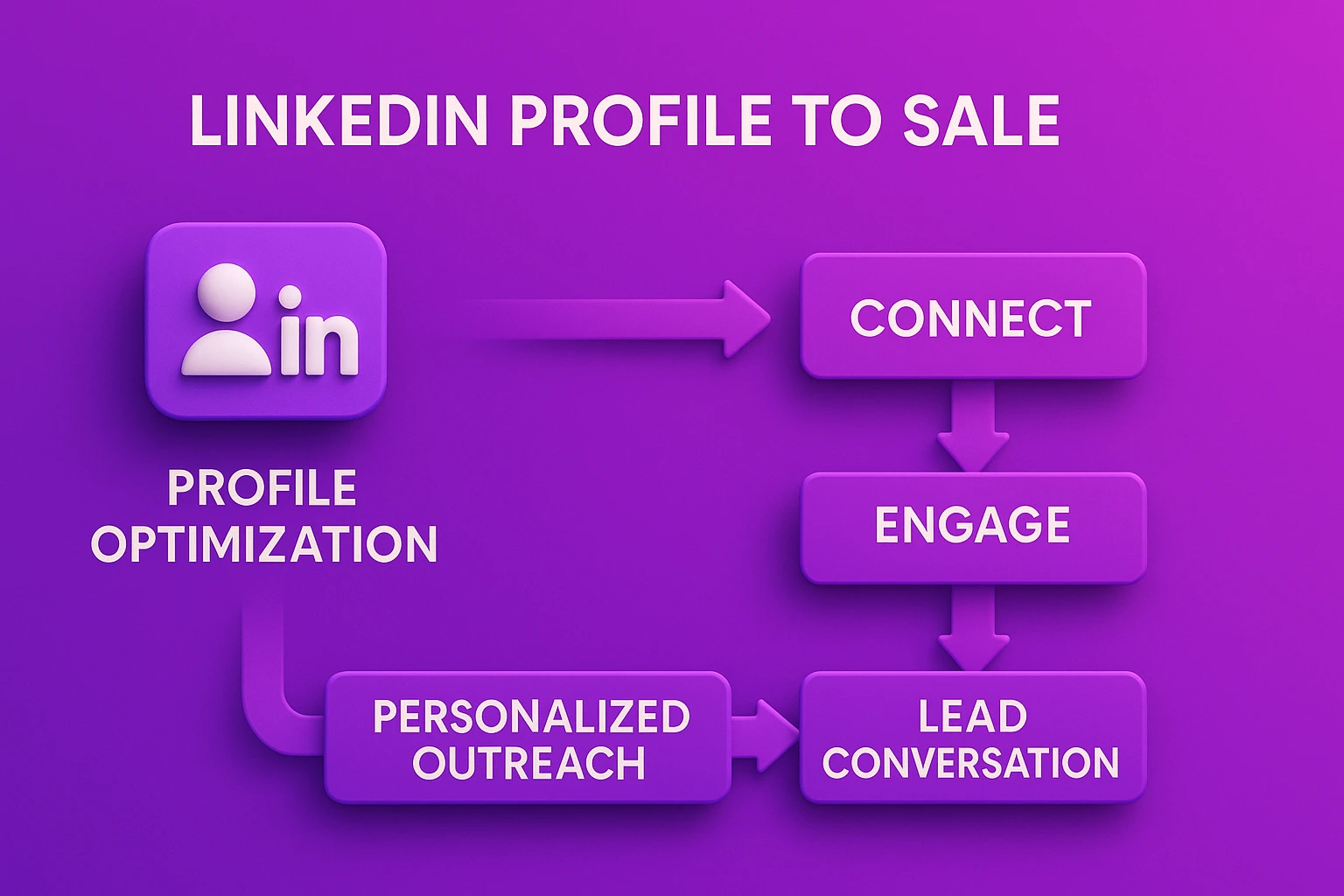
Q5. How to craft effective cold emails for a B2B startup?
Cold emails are one of the most direct ways to reach potential clients, but they need to be brief, personalized, and solution-oriented to be effective.
A strong cold email starts with a compelling subject line that captures attention. Mention something specific about the recipient’s company or a challenge they might be facing, which increases the chances of your email being opened.
Structure your email for maximum impact:
Personalized Introduction: Briefly introduce yourself and why you’re reaching out. Be sure to make the first sentence relevant to them, showing that you’ve done your research.
Address a Real Pain Point: This is the core of your cold email. Identify a specific problem your prospect is facing, and position your product or service as the solution.
Offer a Simple Next Step: Instead of pushing for a hard sell, suggest a low-commitment next step, like a 10-minute chat or a demo.
For example:
“I noticed [Competitor] cut their costs by 20% using [your service]. We’ve helped similar companies reduce overhead and improve efficiency. Interested in a quick 10-minute chat?”
Actionable Tip:
Always include a clear and simple call to action (e.g., “Would you like a 5-minute demo?”) to guide the next steps. Keep it easy for the recipient to respond. Additionally, track open and reply rates (tools like Mailchimp can help) to analyze your subject lines and intros. Use this data to continually refine your outreach strategy based on what resonates with your audience.
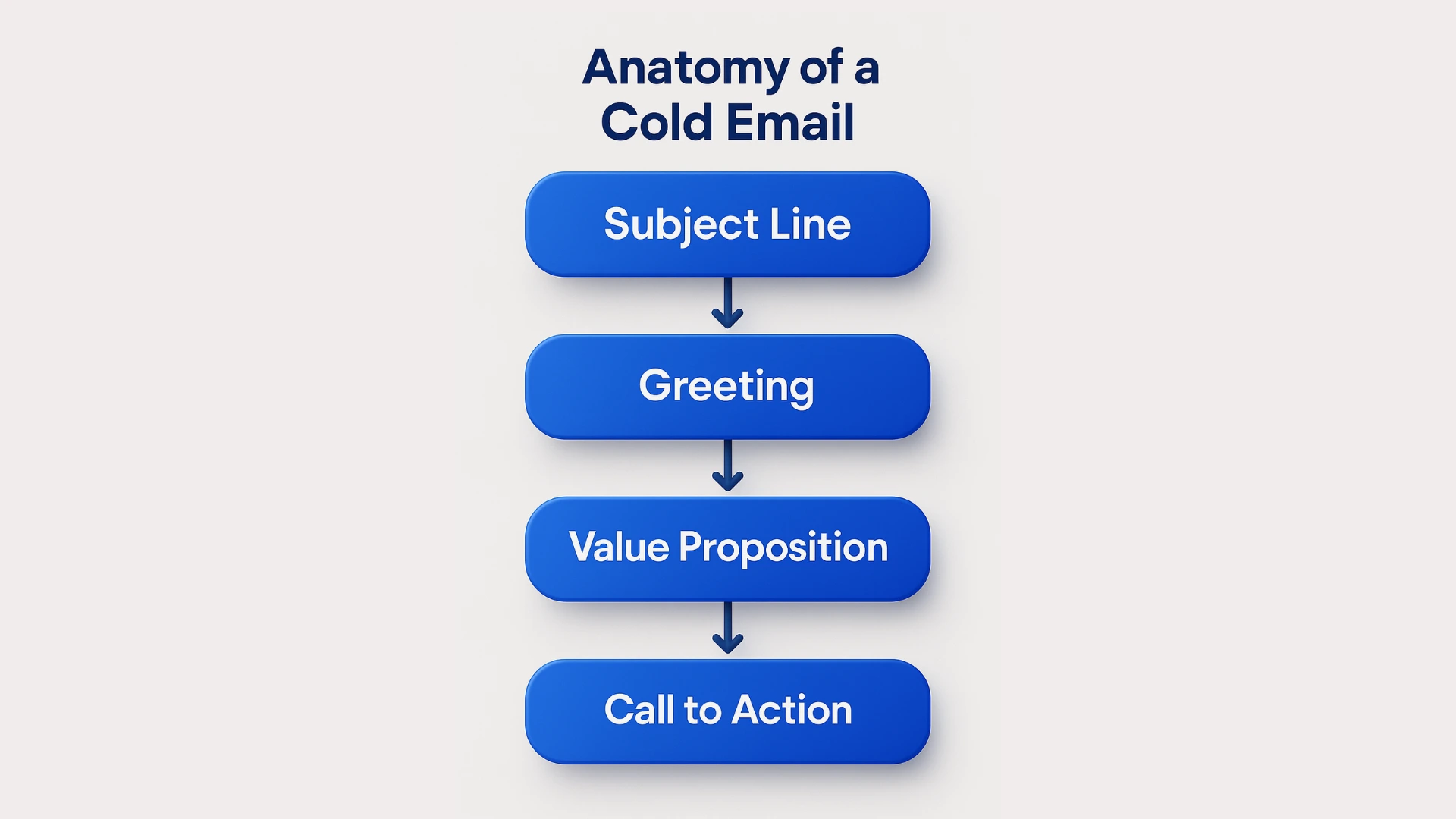
Q6. What low-cost marketing strategies can give a quick sales boost?
When you are on a tight budget, there are several low-cost marketing strategies that can deliver quick results. Email campaigns and referral incentives are effective ways to generate sales without spending much.
Email campaigns:
Even if you have a small email list, sending a targeted offer or newsletter can drive interest in your product. Craft personalized emails that speak directly to your recipients’ needs or problems.
A well-timed email campaign can quickly boost sales by offering discounts, new product information, or exclusive deals.
Referral incentives:
Set up a referral program where customers receive a discount or a free month of service for referring a friend who makes a purchase. Referral programs tap into the power of word-of-mouth, which is one of the most effective forms of marketing.
Encourage your current customers to advocate for your product in exchange for rewards.
Cross-promotions and partnerships:
Partner with complementary businesses for co-marketing opportunities. For instance, a software startup could team up with a service provider in the same niche to co-host a webinar or share a bundled offer. This allows you to reach new audiences at a fraction of the cost of traditional advertising.
Actionable Tip:
Leverage customer testimonials and reviews on your social media channels. Word-of-mouth marketing is free and incredibly powerful. A quick case study or success story shared as a social post can spark interest and drive leads, all with little to no cost.
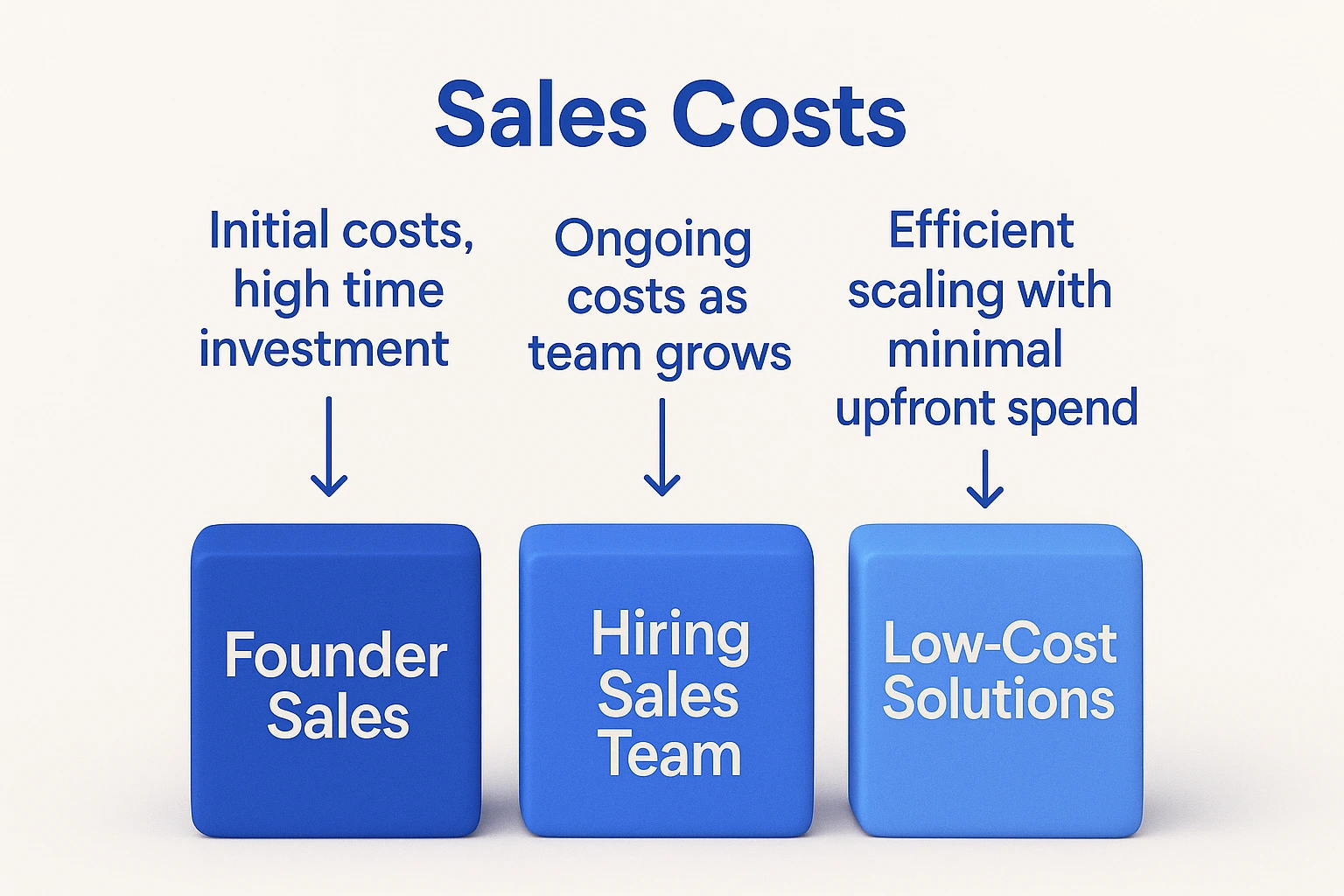
Q7. How to test product-market fit before scaling sales?
Testing for product-market fit (PMF) is crucial before you scale your sales efforts. Essentially, PMF means solving a problem that people care enough about to pay for, and the best way to test it is by observing customer behavior.
Retention and repeat usage:
Start by tracking how many customers keep buying and using your product. High retention rates and repeat orders are strong indicators of product-market fit.
If people continue to use your product over time, it’s a sign that you’re addressing a real, persistent need.
Customer feedback and referrals:
Engage early users and ask for honest feedback. Look for enthusiasm, positive reviews, and referrals.
If users stop using your product quickly or fail to refer others, it may suggest that the product needs refinement. It’s essential to take these signals seriously and tweak the product if necessary.
Actionable Tip:
To measure product-market fit, ask your initial customers how disappointed they would be if they couldn’t use your product. This is a well-known PMF question that helps you gauge how essential your product is to them. Another approach is to run a small paid ad campaign or a landing page test to see if there’s genuine interest before making significant investments in sales or marketing.
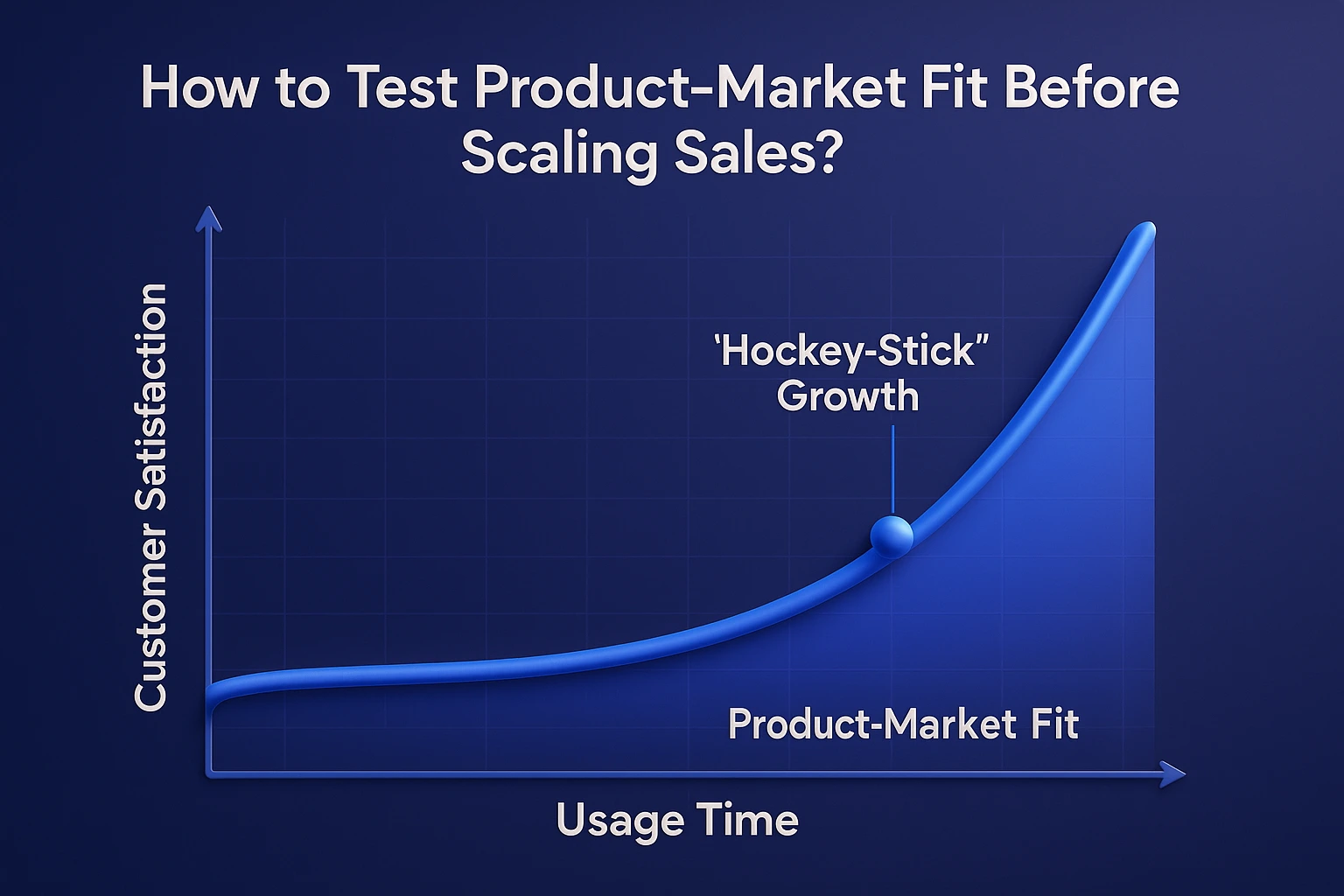
Q8. What’s a good pricing strategy to increase startup sales?
When setting your pricing strategy, focus on both value and simplicity. The key is to make it easy for customers to understand what they’re paying for while clearly communicating the value they’ll receive.
Start with a low entry-level price or free trial:
Offering a low entry-level price or a free trial is a great way to attract your first users. This allows potential customers to try your product without a significant commitment.
Once they see the value, you can upsell them on premium features or higher-tier plans.
Use tiered pricing:
A tiered pricing model (Basic, Pro, Enterprise) helps capture different customer segments. It allows customers to choose a plan based on their needs and budget, while giving you the flexibility to upsell as their business grows.
Value-based pricing:
Ensure your pricing reflects the value you’re delivering. While a cheaper price might attract more customers, a higher price with clear, tangible benefits can boost your revenue per sale.
If you are providing premium features or exceptional support, make sure customers understand the value they’re getting for the higher price.
Actionable Tip:
Analyze your competitors’ pricing to ensure you are not underpricing your product. Being the cheapest option might hurt your brand perception, so position your product based on value rather than price alone. A simple tactic is to run an introductory discount or offer add-ons (such as extended support or training) to incentivize quick sign-ups.
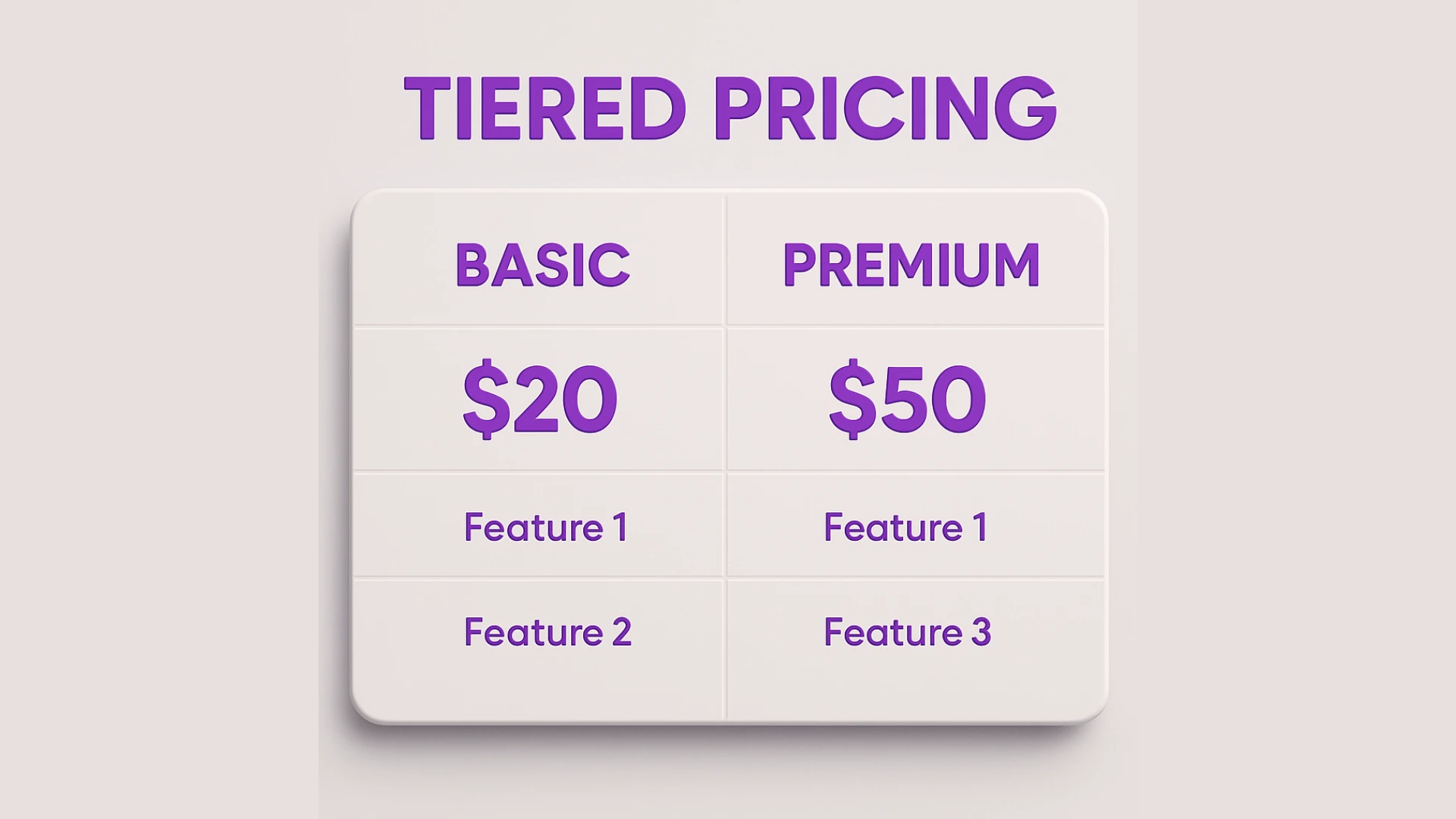
Q9. Which sales tools should a startup use to manage customers?
For startups, managing customer relationships effectively is crucial, but you don’t need expensive, complex tools at the beginning. Start with a free or low-cost CRM system to track contacts, manage follow-ups, and keep your sales pipeline organized.
Some great options include HubSpot CRM, Zoho CRM, or even Airtable, which offers flexibility in tracking and managing customer data.
Email scheduling and automation:
If you are sending newsletters or email campaigns, tools like Mailchimp or Brevo are essential for scheduling emails, automating campaigns, and tracking engagement. They help save time and ensure that your emails reach the right people at the right time.
Scheduling meetings:
A calendar scheduling tool like Calendly can save you a lot of time and hassle when booking meetings. It syncs with your calendar and allows customers to book time slots based on your availability, eliminating the need for back-and-forth emails.
For early-stage startups:
If you are at an extremely early stage and have a small customer base, even a shared spreadsheet can work for tracking leads. However, moving to a CRM as soon as possible will help streamline your processes and improve efficiency.
Actionable Tip:
Make a habit of logging every lead or customer conversation in your CRM. This simple practice will keep you organized and ensure that no hot leads slip through the cracks. Use your CRM’s reminder features to automate follow-ups, and as your business grows, incorporate simple analytics (like reporting dashboards) to track which outreach methods lead to the highest conversions.
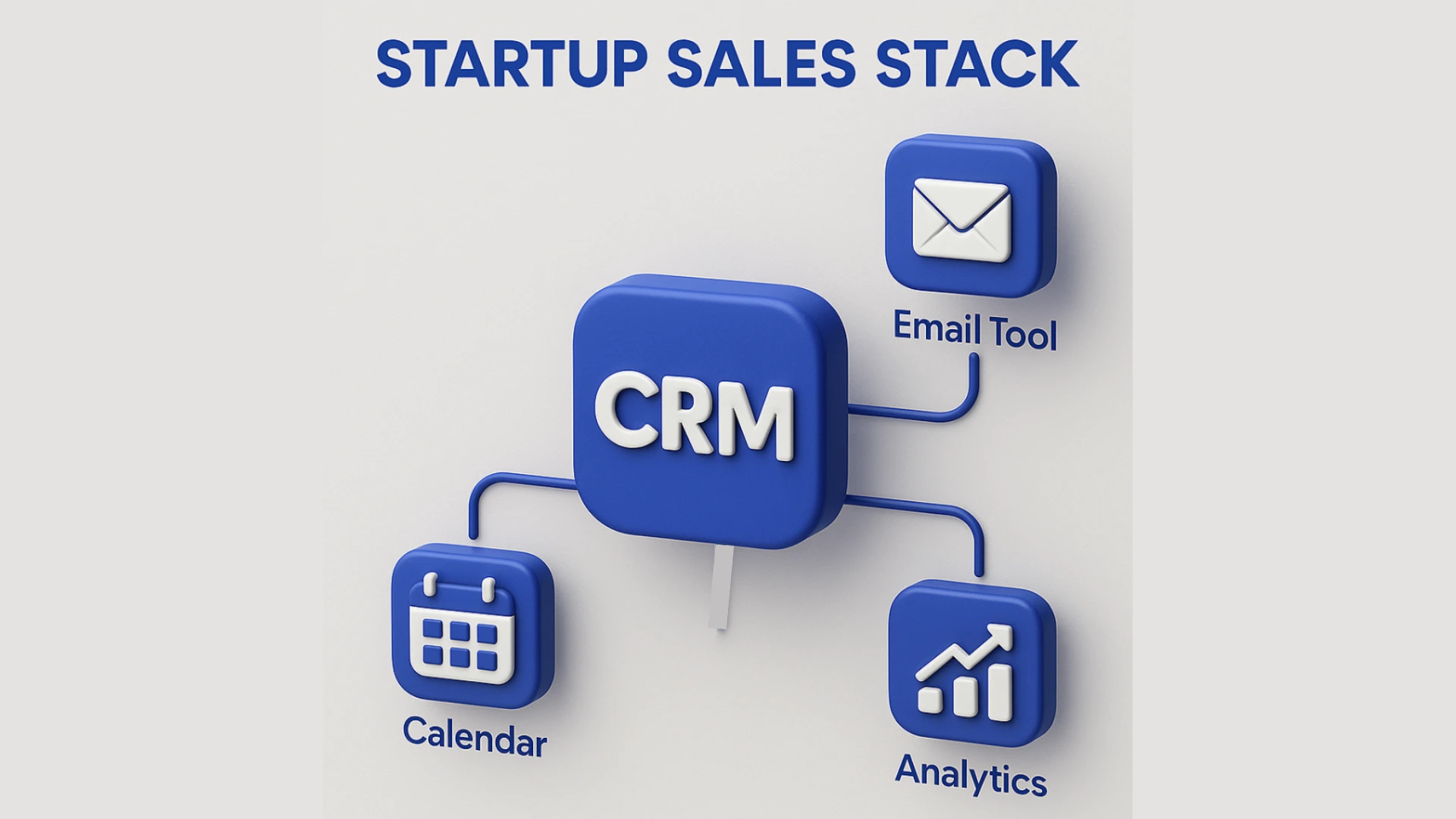
Q 10. How to scale sales once a startup grows beyond 10 people?
Once your startup has achieved product-market fit and has a steady flow of leads, it’s time to formalize your sales process. This is when you start transitioning from informal sales practices to a structured, repeatable system that can support growth.
Formalize your sales process:
Start by hiring or training dedicated sales representatives or a Sales Development Representative (SDR) team. Their focus should be on outreach and product demos to generate qualified leads.
Clearly define the stages of your sales funnel (lead → qualified → proposal → closed) to ensure that everyone on the team understands the process and goals.
Track metrics and use your CRM:
As your team grows, it becomes crucial to track key metrics like conversion rates and lead-to-deal time. Actively use your CRM to manage the growing pipeline, ensuring no leads fall through the cracks.
Monitoring these metrics will help you identify any gaps in your sales process and optimize accordingly.
Actionable Tip:
Develop a simple sales operations playbook that documents your best outreach scripts, email templates, and qualifying questions. This playbook will serve as a training tool for new hires, ensuring consistency in your sales efforts. Additionally, invest in basic sales training for your reps to help them improve their skills. Regularly review pipeline metrics (like lead response time and win rate) to identify bottlenecks and improve efficiency as you scale.

What’s Next?
Now that you’ve explored the key questions shaping your sales strategy, it’s time to take action. Whether you are refining your founder-led sales approach or looking to scale efficiently, we are here to help!
Reach out to us for a free consultation at contact@rev-empire.com
Categories
Recent posts
Share on socials

